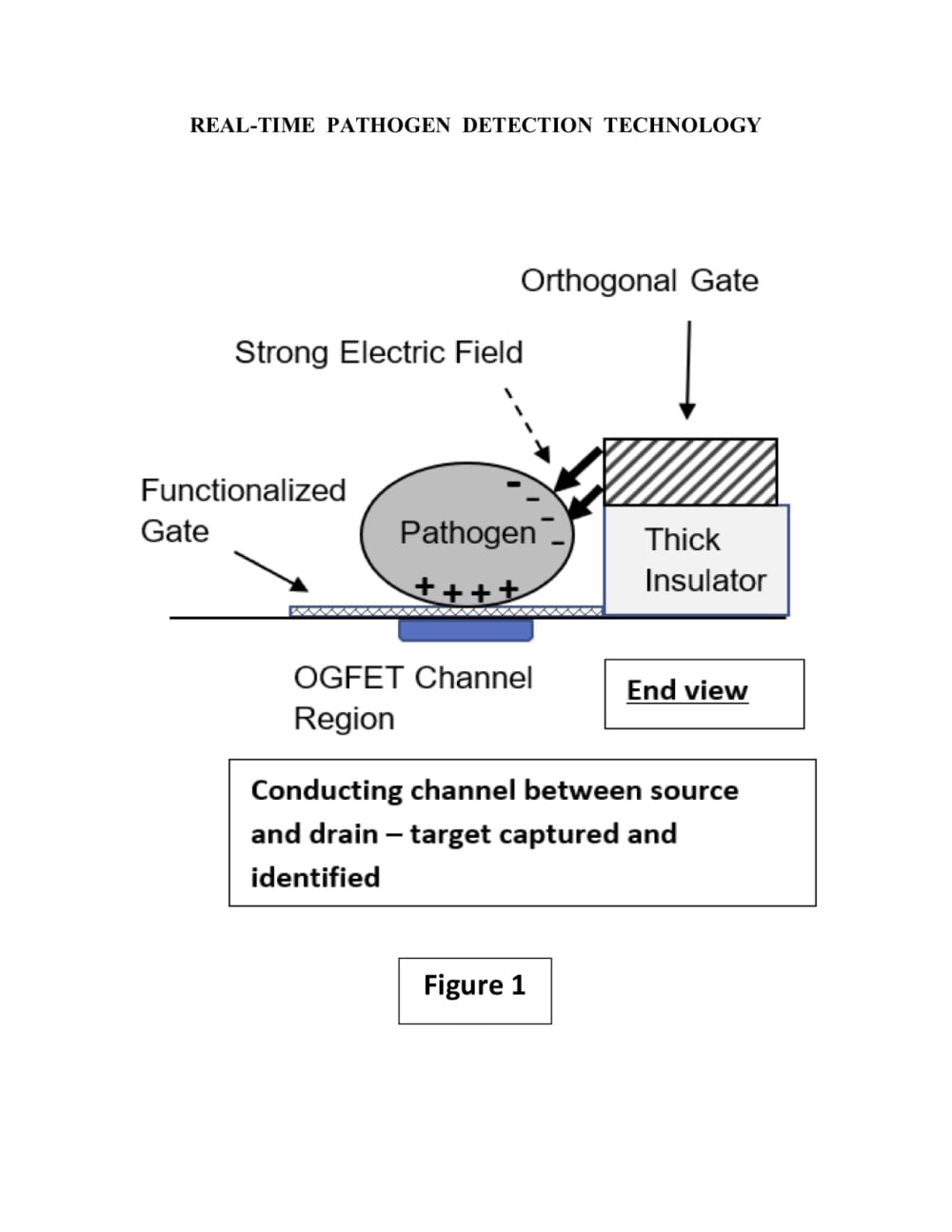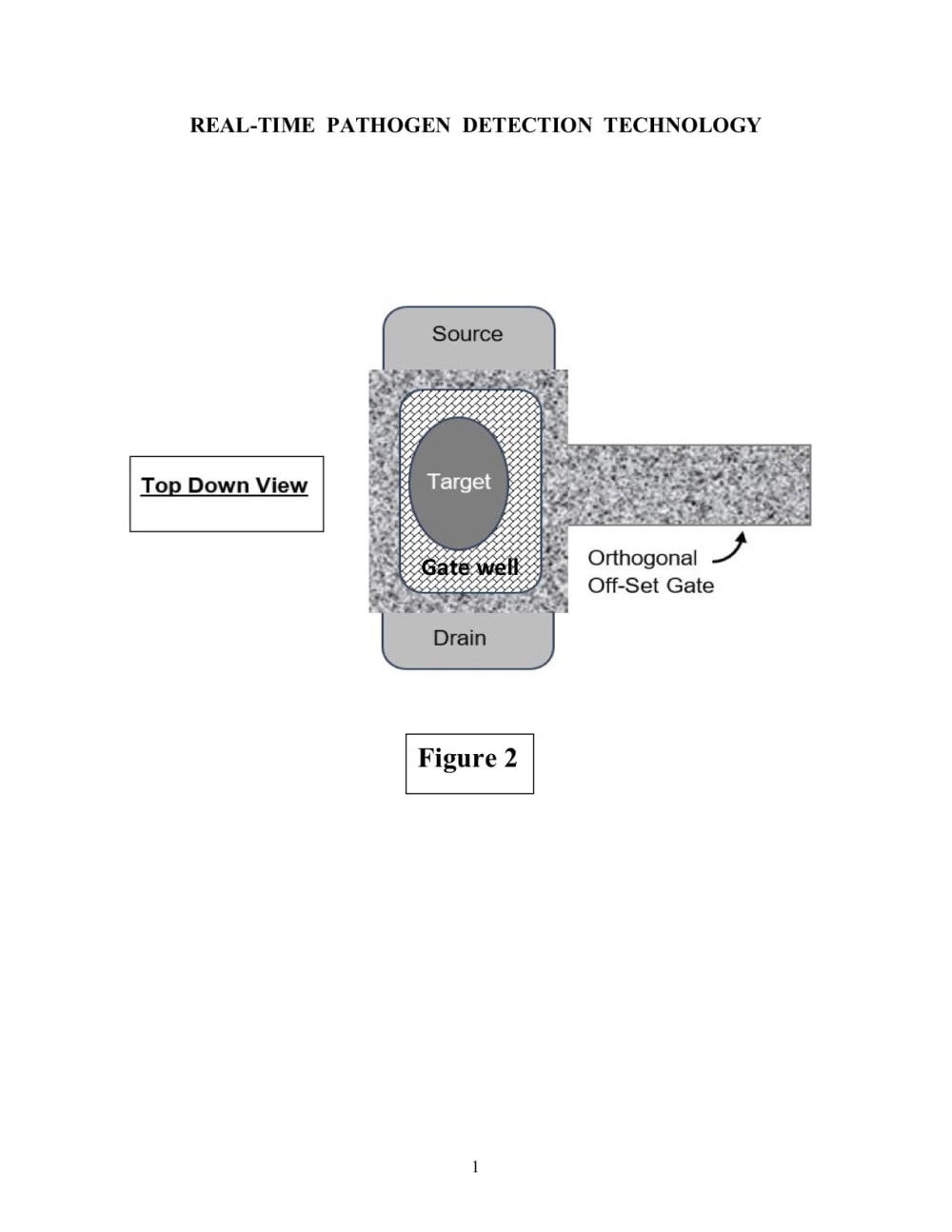
There is a critical need for accurate real-time sensors to detect and identify microbial pathogens. The patented real-time pathogen detection technology herein can detect predetermined target pathogens in less than a minute and requires virtually no preparation – it utilizes the target pathogen itself as an electric field shunt. A small semiconductor chip can easily contain a million individual sensor elements. The entire chip is scanned once per second to detect one or many target captures of the target pathogen.
This new technology combines solid-state electronics with bio-molecular probe technology, resulting in a highly sensitive sensor that can detect the presence of a pathogen within several seconds, electronically and without target preparation or amplification. The sensor can be incorporated into devices for many diverse applications. The rapid response will eliminate time lag currently experienced with testing for the presence of pathogens such as COVID-19.
The design of a traditional Field Effect Transistor (FET) is well-known. The FET herein modifies the gate by creating a well over the semiconductor gate area and provides a gate electrode surrounding the well. The well offset (height) depends on the target of interest. Figure 1 is a pictorial of the structure and shows the basic methodology.
The relative permittivity of microbes is extremely high at low frequencies, Escherichia coli at 10 Hz is about 800,000. An empty gate well with a specified gate potential will remain off. If a target microbe is immobilized in the gate well, the transistor turns on. Figure 2 is a top view showing how the upper gate surrounds the gate well.
This technology uses the pathogen itself, in its natural state, to cause a uniquely designed transistor to turn on, thereby indicating its presence. With no requirement for human intervention or supplies (distilled water in some applications), the sensor chips will be inexpensive to acquire and operate, will be quick - just seconds for detection, 3 minutes for confirmation, and will enable a wide variety of devices to detect and identify intentional and unintentional pathogenic contamination in diverse settings.
Devices utilizing this bio-electronic technology will relieve the overwhelming burden that clinical labs have, particularly in epidemic/pandemic outbreaks. This technology will permit the following testing protocol for COVID-19: patient gives saliva sample; sample is diluted with distilled water; sensor is immersed in diluted sample; positive or negative results are indicated in seconds; test continues for 3 minutes to guard against false positives/negatives; patient is immediately informed of results, an electronic record of results is automatically transmitted. This multidisciplinary approach draws together 3 disparate threads: (1) field effect transistor (FET) technology used in everyday electronic devices; (2) the relative permittivity property of microbes; and (3) molecular probe technology.
-
Awards
-
 2022 Top 100 Entries
2022 Top 100 Entries
Like this entry?
-
About the Entrant
- Name:Michael Potter
- Type of entry:individual
- Software used for this entry:N/A
- Patent status:patented





